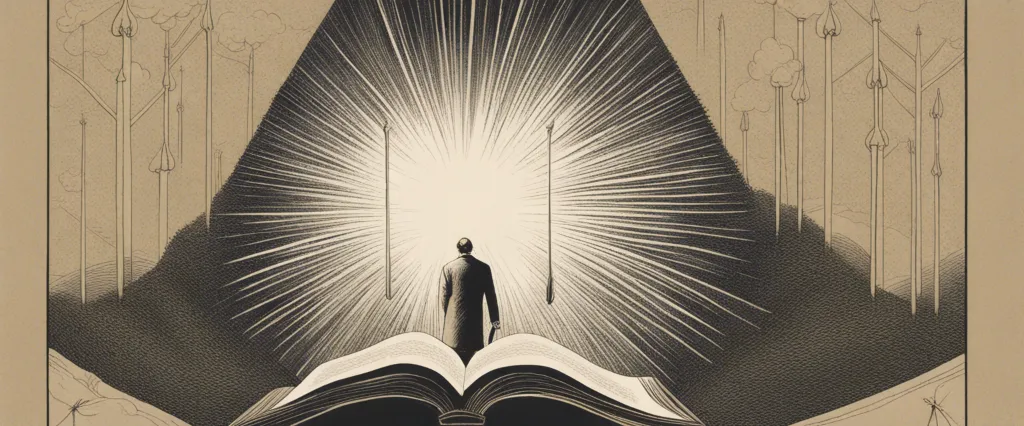In “Albion’s Seed,” David Hackett Fischer takes us on a remarkable journey through the origins of American culture, exploring the profound influence of four distinct British regional cultures that shaped the nation’s early development. With meticulous research and captivating storytelling, Fischer unveils the rich tapestry of these diverse British groups, highlighting their distinct social structures, religious beliefs, and fascinating folkways.
David Hackett Fischer, an esteemed historian and Pulitzer Prize-winning author, is widely recognized for his meticulous approach to historical research and his ability to breathe life into the past. As a professor at Brandeis University, Fischer has dedicated his career to understanding the dynamics of American history, particularly the formative experiences that shaped the nation’s identity.
By delving into the groundbreaking work of “Albion’s Seed,” Fischer provides readers with an insightful exploration of the diverse cultural roots that continue to shape America today.
Chapter 1: Introduction: The Four British Folkways
Chapter 1 of the book “Albion’s Seed” by David Hackett Fischer provides an introduction to the four major British folkways that influenced the early settlement and development of British America. These folkways represent distinct cultural and social patterns that were brought by the English, Scottish, Irish, and Welsh immigrants to the American colonies.
The English folkway, referred to as the “Puritan project,” was characterized by a strong emphasis on social hierarchies, communal obligation, and a religious commitment to individual salvation. The early English settlers aimed to build a stable and ordered society in which everyone had a specific role and obligation.
The Scottish folkway brought a sense of fierce individualism, personal liberty, and adversarial culture to America. Scottish immigrants, heavily influenced by the Highlands, embodied a warrior culture and brought a strong sense of honor, clan loyalty, and resistance against oppressive authority.
The Irish folkway, marked by its complex history of conquest and colonization, carried a legacy of struggles against imperialism and religious oppression. Irish immigrants sought opportunities for economic advancement and held onto traditions such as oral culture, folklore, music, and dance.
The Welsh folkway brought a religious dissent tradition rooted in Calvinist beliefs. Welsh immigrants held a strong sense of community, literacy, and a desire for education. They formed tight-knit communities in America, focused on preserving their language, culture, and religious practices.
Overall, the chapter explores how these four distinct British folkways interacted and influenced the American colonies. The subsequent chapters delve deeper into the historical context and specific contributions of each folkway in shaping the diverse cultural landscape of America.
Chapter 2: Puritans and Pilgrims: The Founding of New England
Chapter 2 of Albion’s Seed by David Hackett Fischer focuses on the Puritans and Pilgrims who founded New England in the early 17th century. Fischer explores their origins, beliefs, and motivations, shedding light on how they shaped the cultural and social landscape of this region.
The chapter begins by delving into the Puritan movement that emerged in England in the late 16th century. The Puritans aimed to purify the Church of England from what they saw as remnants of Catholicism. Many Puritans faced persecution, prompting some to seek a new life in America.
The Pilgrims, a subset of the Puritan movement, were a small group known as Separatists who broke away from the Church of England entirely. They sought religious freedom and established their own congregation in the Netherlands before eventually deciding to settle in the New World.
Fischer explains that the Pilgrims were not only motivated by religious freedom but also economic opportunity. They believed they could establish a successful agricultural community in America, free from the economic hardships they faced in Europe. They also sought to maintain their distinct English identity and preserve their traditions.
The chapter then delves into the journey of the Pilgrims aboard the Mayflower and their arrival in Plymouth, Massachusetts, in 1620. The harsh conditions and lack of resources challenged the Pilgrims, but their strong sense of community and work ethic helped them survive.
Fischer highlights the importance of religion in the daily lives of the Puritans and Pilgrims. They sought to build a “city upon a hill,” a religious utopia that would serve as an example to the world. Church attendance was mandatory, and strict moral codes governed their daily lives.
In summary, Chapter 2 of Albion’s Seed explores the origins, beliefs, and motivations of the Puritans and Pilgrims who founded New England. This chapter highlights their quest for religious freedom, economic opportunity, and the establishment of a unique English society in America.
Chapter 3: Cavaliers and Cavaliers: The Founding of the Chesapeake Bay Colonies
Chapter 3 of David Hackett Fischer’s book “Albion’s Seed” focuses on the founding of the Chesapeake Bay colonies in 17th century America, specifically Virginia and Maryland. The chapter provides a historical overview of these colonies, highlighting the influence of Cavaliers and Cavaliers, two distinct groups of English settlers who played crucial roles in shaping the region.
The chapter begins by discussing the settlement patterns in Virginia, which was primarily established by English Cavaliers. These settlers were characterized by their noble origins, loyalty to the monarchy, and adherence to Anglican traditions. They brought with them a hierarchical social structure, where authority was concentrated in the hands of a few elite landowners. Cavaliers also emphasized the importance of family, religion, and honor, and they sought to recreate the social order they had left behind in England.
In contrast, Maryland was founded by a different group of English settlers known as Cavaliers. These Cavaliers were mainly of Protestant origin and had experienced political and religious persecution in England. They sought to establish a haven for Catholicism and enacted policies to promote religious tolerance and social harmony. Maryland was envisioned as a feudal society, with large estates owned by members of the Catholic aristocracy.
Despite the differences between these two groups, both Cavaliers and Cavaliers shared a common English heritage and originated from the same regions in England. They brought their respective customs, traditions, and values to the Chesapeake colonies, influencing the social, cultural, and economic development of the region.
In summary, Chapter 3 explores the founding of the Chesapeake Bay colonies in America, focusing on the influence of Cavaliers and Cavaliers. These English settlers created distinct societies in Virginia and Maryland, emphasizing different values and traditions. Their impact on the early development of the Chesapeake colonies was significant and has left a lasting legacy in the region.
Chapter 4: Quakers and Borderers: The Founding of the Mid-Atlantic Colonies

Chapter 4 of David Hackett Fischer’s book Albion’s Seed is titled “Quakers and Borderers: The Founding of the Mid-Atlantic Colonies.” In this chapter, Fischer explores the unique characteristics and backgrounds of two significant groups of settlers who migrated to the mid-Atlantic region of North America during the 17th and 18th centuries.
The first group, the Quakers, were predominantly from the northwestern counties of England, such as Cheshire, Lancashire, and Westmorland. Quakers were known for their religious beliefs, which emphasized egalitarianism, pacifism, and simplicity. They had a strong commitment to community and social harmony, as well as a deep opposition to religious and political hierarchy. Quaker migrants were attracted to the mid-Atlantic colonies, particularly Pennsylvania, due to William Penn’s liberal policies that offered religious tolerance and opportunities for self-government. The influence of Quaker beliefs and values shaped the social and political institutions of the mid-Atlantic colonies, leading to the establishment of inclusive and peaceful communities.
The second group discussed in the chapter are the Borderers, who originated from the Anglo-Scottish border region. Borderers were predominantly of Scots-Irish descent and were characterized by their distinctive warrior culture, characterized by clannishness, rivalry, and a propensity for violence. Driven by social conflict and political unrest, many Borderers migrated to the mid-Atlantic colonies, especially the Appalachian region. Their individualistic and confrontational nature had a significant impact on the development of the region’s culture, politics, and warfare.
Fischer concludes the chapter by reflecting on the profound influence of these two groups in shaping the diverse social, cultural, and political landscape of the mid-Atlantic colonies. He emphasizes that their distinct backgrounds and values left lasting legacies that can still be seen in the region today.
Chapter 5: Highlanders and Ulster-Scots: The Founding of the Southern Backcountry
Chapter 5 of “Albion’s Seed” by David Hackett Fischer delves into the settlement patterns and cultural influences brought by Highlanders and Ulster-Scots to the southern backcountry of America during the colonial period.
The chapter begins by highlighting the distinctive characteristics of the Scottish Highlands and Lowlands in the early 18th century. The Highlands were home to Gaelic-speaking clans, while the Lowlands were marked by Presbyterianism and closer proximity to England. Both regions experienced upheaval due to external factors like the Jacobean rebellions and internal conflicts.
The chapter then focuses on the migration of Highlanders and Ulster-Scots to the American colonies, particularly the backcountry of Virginia, the Carolinas, and Georgia. These settlers sought relief from political and economic oppression in their homeland. The author highlights their unique traits, such as a warrior ethos, clan allegiance, and tightly-knit communities, which shaped the culture of the backcountry.
Fischer explores the cultural, religious, and social practices these settlers brought to America. Presbyterianism, with its strict moral code and emphasis on personal responsibility, greatly influenced their lives. Their culture also revolved around the clan system, which provided support networks and social cohesion.
The impacts of Highland and Ulster-Scots culture on the southern backcountry were significant. The settlers brought self-sufficiency, a strong sense of justice, and an aversion to hierarchy. Their lifestyle reflected their Scots-Irish heritage, including behaviors like livestock raiding, feuding, and the cultivation of crops like tobacco.
Overall, Chapter 5 of “Albion’s Seed” explores the migration and cultural contributions of Highlanders and Ulster-Scots to the American southern backcountry. It provides a comprehensive understanding of how these settlers shaped the region’s culture, religion, and social practices through their unique background and experiences.
Chapter 6: Cultural Patterns and Social Structures
Chapter 6 of “Albion’s Seed” by David Hackett Fischer explores the cultural patterns and social structures brought by the English immigrants who settled in America during the colonial period. This chapter focuses on the Puritans who settled in New England.
Fischer argues that the Puritans were primarily motivated by religious and moral concerns. They sought to create a society based on their deeply held Calvinist beliefs. Their migration to America was driven by their desire to establish a pure and righteous community, free from what they saw as corruption in Europe.
The Puritans established a tightly-knit social structure that emphasized community, religion, and education. They believed in a hierarchical society, with a sharp distinction between the clergy and the laity. Church attendance was mandatory, and religious leaders played a central role in the community, exerting significant influence over people’s lives.
Education was highly valued by the Puritans. They believed that an educated citizenry was crucial to maintaining a godly society. As a result, they established schools and colleges, such as Harvard, to ensure that their children received a strong religious and intellectual upbringing.
The Puritans also placed a heavy emphasis on communal living and the idea of a “Godly Commonwealth.” They enforced strict rules and regulations, punishing behavior deemed immoral or contrary to their religious principles. This communal nature of their society fostered a strong sense of community and collective responsibility.
In summary, Chapter 6 of “Albion’s Seed” discusses the cultural patterns and social structures adopted by the Puritans in New England. Their desire for a righteous and pure community shaped their religious practices, educational institutions, and communal living arrangements. Their influence would leave a lasting impact on the development of American society.
Chapter 7: Religion, Education, and Intellectual Life
Chapter 7 of “Albion’s Seed” by David Hackett Fischer delves into the influence religion, education, and intellectual life had on the early English settlers in America. The chapter focuses on four distinct regions: Puritan New England, the Quakers of the Delaware Valley, the Episcopalians of the Chesapeake Bay, and the Scots-Irish of the Appalachian backcountry.
In Puritan New England, the clergy played a significant role in shaping education and intellectual life. They established Harvard College, which became the center of intellectual thought in the region, emphasizing religious education and strict moral values. The Puritans placed great importance on literacy, providing education to every child to ensure they could read the Bible.
Contrasting the Puritans, the Quakers in the Delaware Valley valued egalitarianism and rejected organized religion to some extent. They established schools to teach practical skills, such as craftsmen apprenticeships, rather than focusing solely on religious education. The Quaker influence promoted a more open and tolerant intellectual environment.
In the Chesapeake Bay region, the Anglican Church held a dominant position and education was primarily available to the wealthy elites. The Anglican clergy were tasked with maintaining social order, which limited the intellectual development of the broader population.
Finally, the Scots-Irish in the Appalachian backcountry lacked access to formal education and established their own educational and religious networks. With a strong emphasis on personal independence and self-reliance, Scots-Irish communities created a vibrant oral tradition where education was primarily transmitted through storytelling and communal gatherings.
Overall, Chapter 7 of “Albion’s Seed” highlights the varied approaches to religion, education, and intellectual life among different English settlers in America.

Chapter 8: The Legacy of Albion’s Seed: Patterns in American Culture
Chapter 8 of David Hackett Fischer’s book “Albion’s Seed: Four British Folkways in America” delves into the legacy of the four major British cultural streams that shaped American society. The chapter primarily focuses on the cultural patterns of the Appalachian and Highland South, which were primarily influenced by the Borderland Folkway, namely the Anglo-Scottish frontier.
Fischer emphasizes that the legacy of the Borderland Folkway left a lasting impact on the Appalachian and Highland South regions. The settlers who migrated to these areas were often marginalized or displaced individuals, seeking new opportunities and freedom from English hierarchies. These settlers brought with them their distinct cultural practices, such as wearing distinctive clothing, speaking unique dialects, and practicing a strong sense of individualism.
In this chapter, Fischer examines various aspects of Appalachian and Highland South culture. He explores the kinship patterns, music and dance traditions, storytelling, and the strong sense of honor and violence prevalent in these regions. He also highlights the influence of Scotch-Irish Presbyterians, who brought their religious and educational practices to these areas.
The chapter further analyzes the impact of the Borderland Folkway on American politics, particularly the southern Radicals who emerged from the Appalachian and Highland South regions. Fischer argues that these Radicals played a crucial role in shaping American democracy through their defense of individual liberties and opposition to centralized power.
Overall, Chapter 8 of “Albion’s Seed” highlights the rich cultural heritage of the Appalachian and Highland South regions, emphasizing how the Borderland Folkway shaped their distinct practices and values, leaving a lasting legacy in American culture.
After Reading
In conclusion, David Hackett Fischer’s book “Albion’s Seed” provides a comprehensive analysis of the four major migrations from the British Isles to America during the 17th and 18th centuries. Through meticulous research and compelling storytelling, Fischer unveils the lasting cultural, linguistic, and social impacts brought by these four distinct groups: the Puritans, the Cavaliers, the Quakers, and the Scots-Irish. By examining various aspects of their lives such as religion, politics, family structures, and folkways, Fischer reveals how these diverse groups shaped the American nation and contributed to the formation of regional identities that are still evident today. Overall, “Albion’s Seed” offers readers a profound understanding of the rich and diverse heritage that underlies American society.
1. Natasha’s Dance” by Orlando Figes: This book provides a captivating exploration of Russian culture, art, and history. Figes weaves together various aspects of Russian society, from literature and music to politics and social customs. Through insightful anecdotes and beautiful prose, “Natasha’s Dance” offers a profound understanding of Russia’s complex identity.
2. Rice Noodle Fish” by Matt Goulding: For travel and food enthusiasts, this book takes readers on a delightful culinary journey through Japan. Goulding introduces readers to the diverse regional cuisines, hidden gems, and vibrant food scenes across the country. Detailed descriptions of mouthwatering dishes and engaging narratives make “Rice Noodle Fish” the perfect choice for anyone interested in exploring Japan through its rich culinary traditions.
3. A12-V12″ by Anonymous: This gripping novel delves into the mysterious world of secret intelligence agencies and espionage. Drawing inspiration from the research and insights gained from reading “Albion’s Seed” by David Hackett Fischer, the anonymous author crafts a thrilling narrative that explores the unseen world of secret operations while offering a thought-provoking commentary on national security and personal loyalties.
4. “Between the World and Me” by Ta-Nehisi Coates: This powerful memoir takes the form of a letter from the author to his teenage son, reflecting on the experiences and challenges faced by African Americans in America. Coates provides a compelling blend of personal anecdotes, historical analysis, and social criticism that forces readers to confront the realities of systemic racism in the United States. “Between the World and Me” is a poignant and necessary read for anyone interested in understanding racial issues and promoting social justice.
5. Sapiens: A Brief History of Humankind” by Yuval Noah Harari: In this thought-provoking book, Harari traces the journey of Homo sapiens from their evolutionary origins to the present day. Exploring anthropology, biology, and history, he delves into the key developments and revolutions that shaped human civilization. “Sapiens” challenges our fundamental beliefs about humanity, urging readers to question the structures and institutions that define our world while offering a fresh perspective on our collective history.



